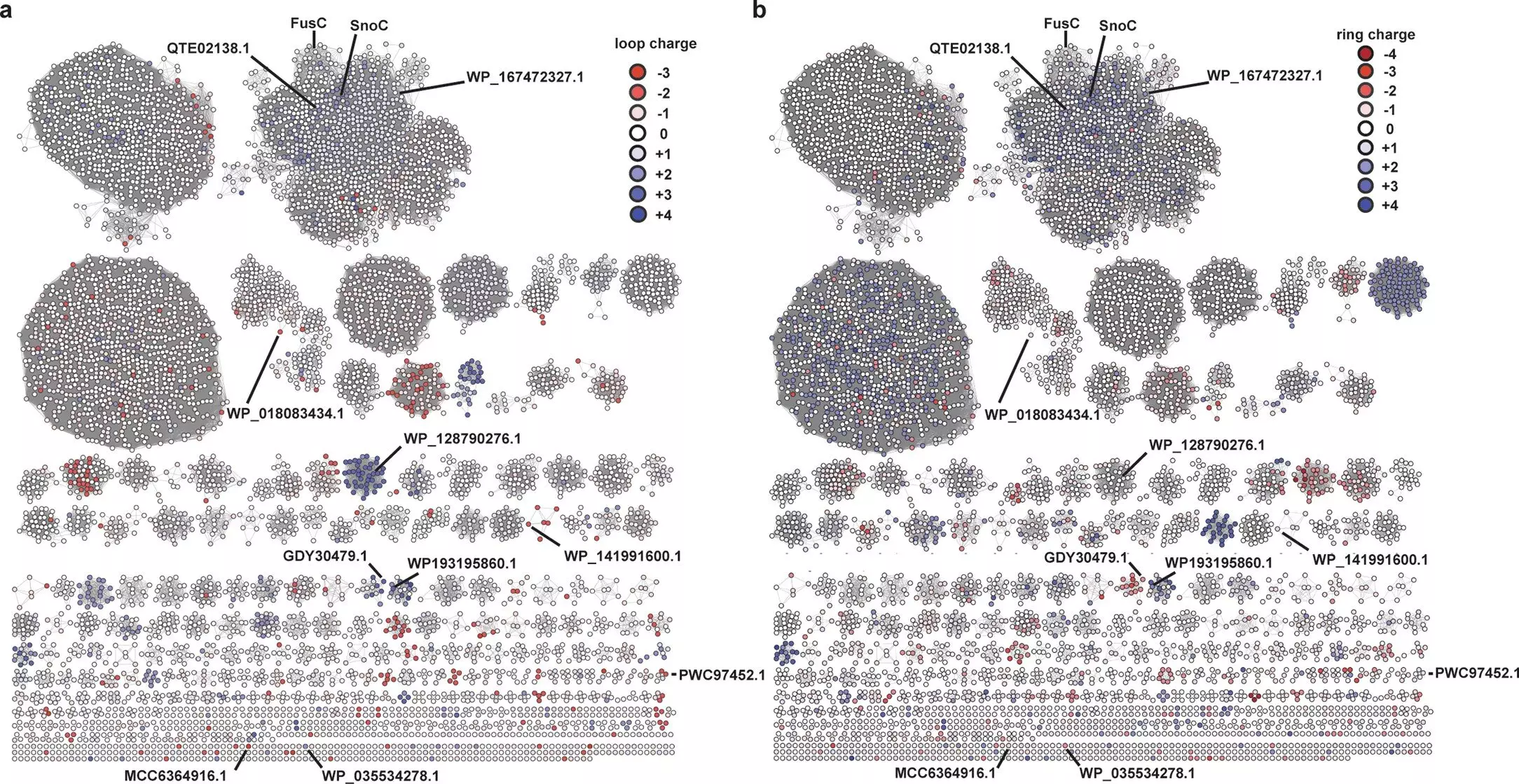Lasso peptides have emerged as a fascinating category of natural compounds primarily synthesized by various bacterial species. Their unique lasso-like structure not only distinguishes them from other peptide classes but also confers a remarkable stability that makes them resilient against extreme environmental conditions. Recent scientific inquiries, particularly a groundbreaking study published in *Nature Chemical Biology*, have provided new avenues for understanding the complexities involved in the biosynthesis of these peptides. This article aims to delve into the implications of these findings for the development of lasso peptide-based therapeutics.
Lasso peptides epitomize the intricate interplay between the natural world and biochemical engineering. The creation of lasso peptides involves complex ribosomal synthesis, where linear chains of amino acids are initially formed. The unique knotted configuration is subsequently achieved through the synergistic actions of two specialized enzymes: a peptidase and a cyclase. As highlighted by Susanna Barrett, a graduate student at the Mitchell lab, the intriguing aspect of lasso peptides lies in their ability to form a slip knot-like structure, rendering them highly stable and versatile for potential therapeutic applications. Their documented antibacterial, antiviral, and anti-cancer properties further bolster their significance in drug discovery.
Despite the promising attributes of lasso peptides, challenges remain in fully understanding the biochemical processes behind their formation. For over thirty years, scientists have grappled with comprehending how the cyclase enzymes catalyze the folding of these peptides into their characteristic knots. Part of the difficulty arises from the inherent instability and insolubility of these enzymes during the purification process. However, a notable exception to this trend is the fusilassin cyclase (FusC), a model system that has facilitated advancements in our comprehension of the lasso formation process.
The recent study aimed to elucidate the structural dynamics of FusC, paving the way for a deeper understanding of the lasso peptide synthesis process. Researchers employed the cutting-edge AI program AlphaFold to predict the structure of FusC, which played a crucial role in revealing the interactions between the cyclase and its peptide substrate. The integration of AI technologies, alongside molecular dynamics simulations facilitated by platforms like Folding@home, allowed scientists to conduct unprecedented studies on the atomic-level interactions involved in lasso peptide folding.
Through this computational endeavor, significant findings emerged regarding the importance of specific residues located in the cyclase’s active site. The researchers discovered that the backwall region of this site, particularly helix 11, plays a pivotal role in mediating the folding of lasso peptides. By manipulating the amino acid composition in this region, they were able to create a variant of FusC capable of folding lasso peptides that the original cyclase could not produce.
The implications of this research extend far beyond theoretical knowledge; they open up practical avenues for the engineering of cyclases aimed at generating a more diverse array of lasso peptides. Collaborating with the biopharmaceutical company Lassogen, the researchers demonstrated the applicability of their findings by engineering another cyclase known as McjC. This modified enzyme successfully produced a potent inhibitor targeting a cancer-promoting integrin, showcasing the potential to tailor lasso peptide properties with therapeutic intent.
As Mark Burk, CEO of Lassogen, aptly noted, the capability to engineer lasso cyclases significantly enhances the therapeutic application of these molecules. The biosynthetic methods combined with modern computing power and AI innovations are significantly expanding the horizons of peptide therapy. Given the limitations presented by natural enzymatic systems, such sophisticated engineering techniques are essential for optimizing drug efficacy and diversity.
The success of this research underscores the importance of interdisciplinary collaborations in addressing complex scientific challenges. Douglas Mitchell, a leading figure in the study, emphasized that the insights gained would not have been possible without the synergy between diverse scientific fields—namely computational biology, chemical engineering, and synthetic biology. This collaborative effort at the Carl R. Woese Institute for Genomic Biology exemplifies how such partnerships can drive innovation and breakthroughs in the realm of genomics and biotechnology.
The study of lasso peptides not only enhances our understanding of microbial biosynthesis but also offers promising pathways for drug development. As methodologies become increasingly refined through the integration of AI and novel engineering techniques, the potential for lasso peptides to serve as effective therapeutic agents is greater than ever. The insights gained from recent research represent a significant step forward, heralding a new era of peptide-based therapeutics in clinical settings.


Leave a Reply